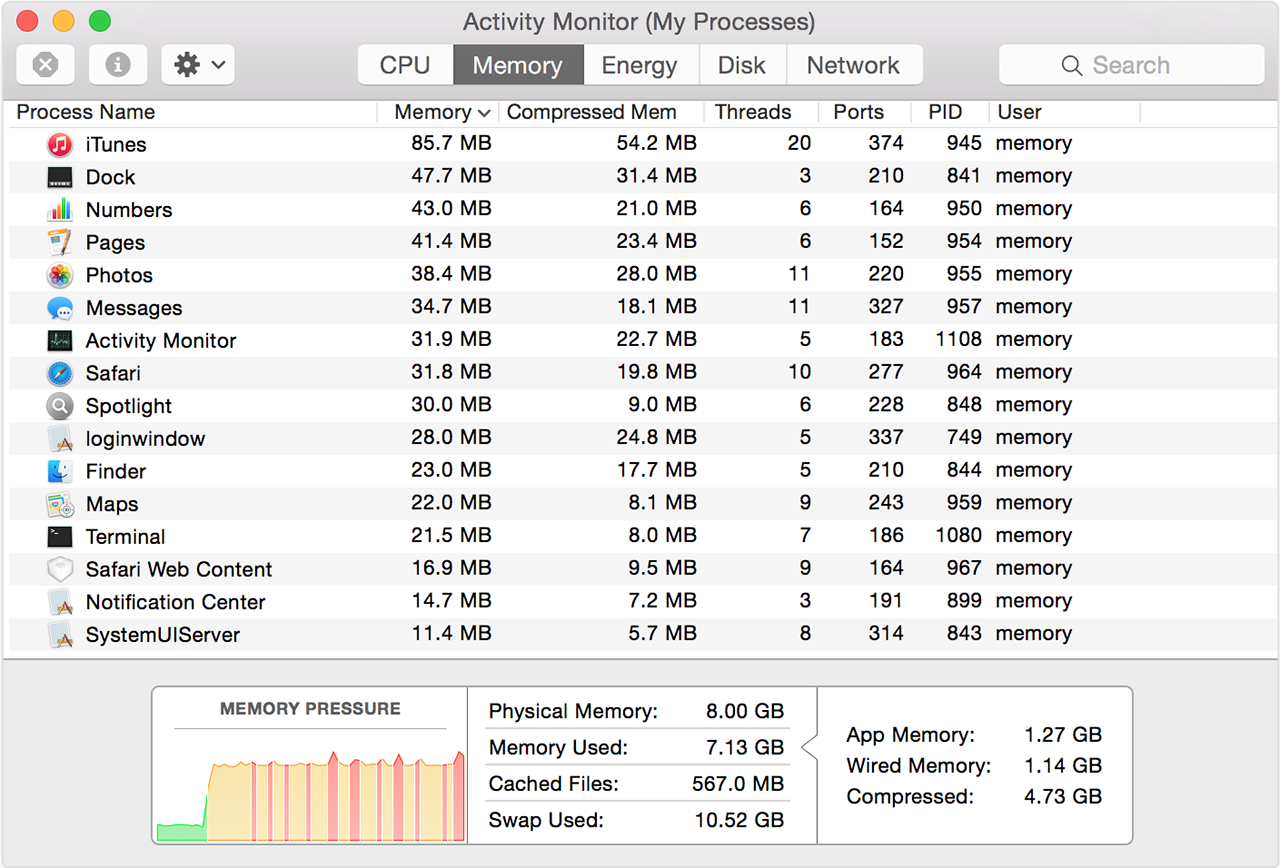- How Companies Monitor Activity On Mac
- Find Activity Monitor Mac
- What Is Activity Monitor App On Macbook
Noob2Pro
Hey
Activity Monitor shows all the apps and processes that are currently running on your Mac. When trouble’s afoot, you generally want to find out which app is dominating your Mac’s processors. When the Activity Monitor window opens, find the app in question and kill the process. Do so by clicking on the “X” button found in the top-left of the Activity Monitor window. This will prompt a pop-up box to appear asking if you want to force quit the program. Go ahead and force quit, as this will allow you to remove the application.
We all need to make sure our system is running correctly. The best way to access information on how your system is performing is through Activity Monitor. It is designed to show you information about your system resources. This includes, CPU, RAM, Disk, and Network, as well as individual system processes. Its not an app you use actively how every it is useful to have it running in the background. You mostly use Activity Monitor to troubleshoot problem applications and wonder why your Mac is running so slowly.
Activity Monitor is found under Utilities > Activity Monitor. You window should look similar to the one below. The window is split into two basic sections. The processes list and the resource tabs.
How Companies Monitor Activity On Mac
The process list shows you what applications are running on your Mac. You can filter the list based on who owns the application using the drop down menu in the tool bar. I recommend you select it to “My Processes” or “Windowed Processes” as these are the ones that usually go wrong. You can quit a process by pressing the “Quit Process” button in the top left corner or the window. You will have two options when the dialogue window pops up. You can either “Quit” the process and allow it to save all the files that it may be using, or “Force Quit” the app. This will kill the process immediately, you will end up Force Quitting applications that are not responsive. As a general rule don’t Force Quit applications you don’t know, you will probably end up breaking something.
The process list can be sorted using headings at the top of the columns. I tend to organise the apps list by CPU usage as this is the one I am most interested in. You can also organise it by memory, to see which apps are being the hogs. The process list is quite useful to see what is running and what is taking up your resources. I don’t recommend how every quitting apps which you don’t recognise, as quite a lot will be system apps that you need, prime example being “kernal_task”.
The bottom half of Activity Monitor is statistical information on your system. This is split into a variety of different tabs, each looks into a different area of your Mac. The CPU section, as you may have guessed, shows you the % of your CPU in use. This is split into Users processes which you run, System processes which the system runs. The “Nice” section is a percentage show by programs which have been given a higher priority by the system, most of the time you will never see and nice apps running. The histogram chart will then combine all of these processes and show you the output. If there is more green and red values, then your CPU is being used more. You can double click on the chart to see a zoomed in model.

The next section, System Memory, is dedicate to how much ram is being used by your Mac. This, again, is split up into different sections. Free memory is not being used at all. Wired memory is memory that can’t be moved onto your disk (it can’t be converted into Swap memory), generally system memory to help your Mac run. Active memory is being used by applications, this is generally the majority in the pie chart. The more apps you open the more bigger the Active memory size. Inactive memory is memory which has been reserved by an app, its called it for use at a later date, it allows you Mac to run faster since an app can automatically use the memory with having to ask for it. Generally you don’t need to worry how much memory is being used, the value by “Used” will by all that you need, if you find the value is getting to high and nearing your RAM limit, I would recommend you buy more memory.
The Disk Activity and Disk Usage sections are designed to show you what is happening to your disk. The Disk Activity will show you how much information is being written to disk, I hardly ever use this section. Its only really useful if you are having slow downs with an app and want to know if your disk is being used. The Disk Usage section will simply show you how much space is being used.
The final section, Network, is really useful. This will show you how much data is flowing in and out of your Mac. If you are wondering why the Internet is going slow, or why a file isn’t being downloaded particularly quickly, the Network tab is usually a good place to check. It will show you how your network is performing. If you find that it is being used flat out, its usually a good indication to go investigate what is happening.
Overall Activity Monitor is a good app for showing your system resources, what is using them and where problems may be occurring. If this type of information more accessible (since Activity Monitor is a bit bulky) check out iStat Menus. It can put all of this information on your menu bar which is a lot quicker and easier to read.